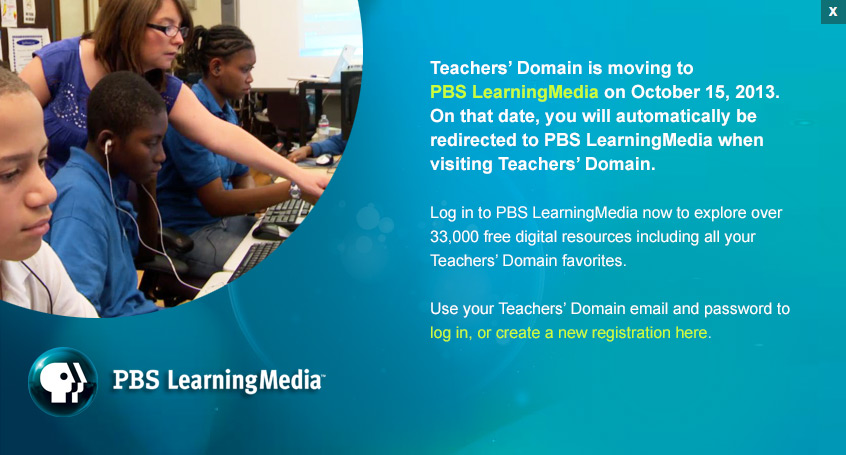teachers'domain: Digital Media for the Classroom and professional Development
User: Preview
Native peoples in the Great Plains of North America lived off the land for centuries without making major changes to it. However, it only took a few decades for settlers in the 1800s to totally transform—change—the land. Why did the two groups have such different ways of living on Earth?
CMS PREVIEW MODE
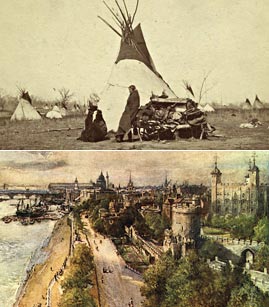
The families of most settlers originally came from Europe. There, open land was scarce—which means there was very little of it. The richest people bought up all the land, while everyone else worked for them. Most people who farmed for a landowner lived on the same small piece of land all their lives and could not easily leave.
In North America, however, a smaller population of people meant that there was much available land, with little competition for it. There was no land ownership, so people were free to use natural resources in many different regions. Some mainly stayed in one place and farmed, while others moved from place to place with the seasons.
In this lesson, you'll explore the major differences between Native Americans' and settlers' perspectives on—ideas about—land, and what happened when these two groups wanted to live in the same area.
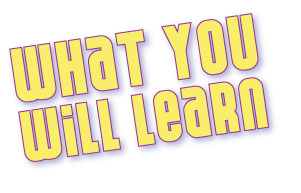
Goals
Here are the big ideas you will learn about in this lesson:
Strategies
You will be using many reading and writing strategies to complete this lesson. The key strategies that you will focus on are:
Vocabulary
Read these words and their definitions. When you see them, you may click on them to read the definition again.
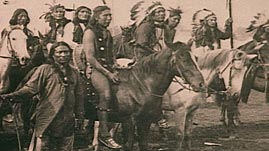
Video: 2m 09s
Native Americans thought of the land and all living things on it as part of their family. They believed they should coexist—live in peace together—with nature. Watch this video to learn more about how Native Americans of the Great Plains—the region between the Mississippi River and the Rocky Mountains—lived and to explore their perspective on the land.
Click "View" on the left to watch the video.
After viewing, describe one to two conflicts that might arise if settlers moved into this land.
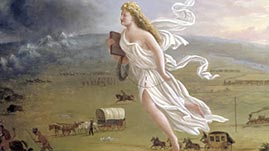
Image
In 1845, the term "Manifest Destiny" was first used to describe the belief that the United States should control all the land from the Atlantic Coast to the Pacific Coast. "Manifest" means obvious, or clearly true. U.S. citizens thought it was obvious—manifest—that God had given the land to the settlers and not to the Native Americans who were already there.
Just before and after the Civil War, many settlers moved west into the Great Plains region. For them, landownership was important because they could work for themselves and earn their own money. They cleared forests, dammed rivers, and plowed grasslands to plant crops and transform the land into farms and towns .
Click "View" on the left to take a look at this 1872 painting by John Gast, called American Progress. Then write two to three sentences explaining how this painting tells the story of what happened when the settlers moved into the Great Plains.
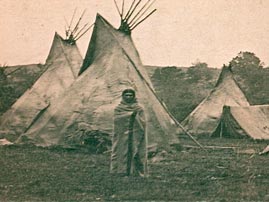
Show what you've learned by answering these three questions. Be sure to save all your answers before you go to the next screen.
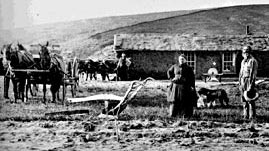
Document
In this lesson, you have learned that Native Americans and settlers believed very different things about nature and the land. Now you will read about how these differences played out during the 1800s.
Click "View" on the left to read the passage.
Write at least one way in which Native Americans and settlers viewed the land differently.
Interactive
You will now check your understanding of the vocabulary words for this lesson by placing them in sentences. Click "View" on the left to begin the activity.
Before moving to the next screen, choose two words from the vocabulary list and write a new sentence for each word.
Vocabulary words: coexist, continent, ownership, perspective, reservation, transform
Interactive
As the video and the reading have shown, Native Americans and settlers had very different perspectives on how the land in the Great Plains should be used. In this activity, you will compare these opposing values.
Click "View" on the left to begin the activity. Your teacher will review the answers with you.
Then, before moving on to the final assignment, you may want to watch this lesson's video again or reread the passage.

Video: 2m 09s

Document
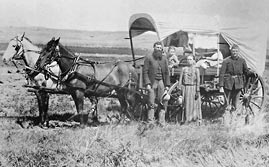
In this lesson, you have learned about the different perspectives that Native Americans and settlers had about land. You also learned about what happened when the two groups wanted the same land in the Great Plains. You will now write an essay that demonstrates what you have learned and what you think about it.
Begin by reviewing your notes. Click "review my work" above and view or print out the screen that pops up.
Final Assignment Instructions
Teachers' Domain, Conflict Over Western Lands, published January 4, 2011, retrieved on February 23, 2025,
http://www.teachersdomain.org/resource/midlit10.soc.splland/
Media Type:
Self-paced Lesson



Funding for the Walmart Middle School Literacy Initiative on Teachers’ Domain is provided by the Walmart Foundation. Early funding for Inspiring Middle School Literacy was provided by the Leon Lowenstein Foundation.
National K -12 Subject:
WGBH is trying to develop materials that better meet the needs of our users. Please take this brief survey to share how you use these resources and to provide feedback on your experiences using these materials. Take the Survey!
In this self-paced literacy lesson, students learn about the differences between the way white settlers and Native Americans thought about land and land ownership in the mid-1800s. Students develop their literacy skills as they explore a social studies focus on the concept of Manifest Destiny and how it created conflict in the Great Plains. During this process, they read informational text, learn and practice vocabulary words, and explore content through videos and interactive activities. When they are finished, students select and complete a writing assignment offline.
This is a student-directed lesson. Students will complete the lesson online, then print a summary of their notes and interactive activity results. Students can use this printout for reference when completing the final writing assignment offline.
Download and print the Conflict Over Western Lands—Teacher's Guide (PDF) for essential background information and suggestions for ways to support the lesson.
Technical notes
To help improve this service, please report and describe any standards correlations that you find to be inaccurate.
Academic standards correlations on Teachers' Domain use the Achievement Standards Network (ASN) database of state and national standards, provided to NSDL projects courtesy of JES & Co.
![]()
We assign reference terms to each statement within a standards document and to each media resource, and correlations are based upon matches of these terms for a given grade band. If a particular standards document of interest to you is not displayed yet, it most likely has not yet been processed by ASN or by Teachers' Domain. We will be adding social studies and arts correlations over the coming year, and also will be increasing the specificity of alignment.
You must be signed in to see standards matches for your state.
 Loading Standards
Loading StandardsMajor funding for Teachers' Domain was provided by the National Science Foundation.
Teachers Domain® Home | Change Edition
About Teachers' Domain | Contact Us | Privacy Policy | Terms of Use
Teachers' Domain: © 2002-2025 WGBH Educational Foundation | shopPBS Educational Media
